A recent article in the Atlantic rewrites history by claiming that the law forces Americans to drive automobiles. “Our laws essentially force driving on all of us,” asserts University of Iowa law professor Gregory Shill, “by subsidizing it, by punishing people who don’t do it, by building a physical landscape that requires it, and by insulating reckless drivers from the consequences of their actions.”
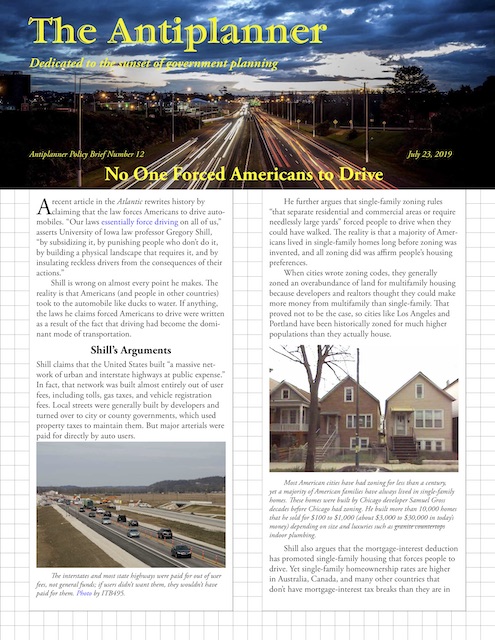 Click image to download a four-page PDF of this policy brief.
Click image to download a four-page PDF of this policy brief.
Shill is wrong on almost every point he makes. The reality is that Americans (and people in other countries) took to the automobile like ducks to water. If anything, the laws he claims forced Americans to drive were written as a result of the fact that driving had become the dominant mode of transportation.
Shill’s Arguments
Shill claims that the United States built “a massive network of urban and interstate highways at public expense.” In fact, that network was built almost entirely out of user fees, including tolls, gas taxes, and vehicle registration fees. Local streets were generally built by developers and turned over to city or county governments, which used property taxes to maintain them. But major arterials were paid for directly by auto users; in contrast, transit lines are almost entirely subsidized.
The interstates and most state highways were paid for out of user fees, not general funds; if users didn’t want them, they wouldn’t have paid for them. Photo by ITB495.
He further argues that single-family zoning rules “that separate residential and commercial areas or require needlessly large yards” forced people to drive when they could have walked. The reality is that a majority of Americans lived in single-family homes long before zoning was invented, and all zoning did was affirm people’s housing preferences.
When cities wrote zoning codes, they generally zoned an overabundance of land for multifamily housing because developers and realtors thought they could make more money from multifamily than single-family. That proved not to be the case, so cities like Los Angeles and Portland have been historically zoned for much higher populations than they actually house.
Most American cities have had zoning for less than a century, yet a majority of American families have always lived in single-family homes. These homes were built by Chicago developer Samuel Gross decades before Chicago had zoning. He built more than 10,000 homes that he sold for $100 to $1,000 (about $3,000 to $30,000 in today’s money) depending on size and luxuries such as granite countertops indoor plumbing.
Shill also argues that the mortgage-interest deduction has promoted single-family housing that forces people to drive. Yet single-family homeownership rates are higher in Australia, Canada, and many other countries that don’t have mortgage-interest tax breaks than they are in the United States. The average size of new homes built in Australia is also bigger than in the United States.
Shill borrows Donald Shoup’s argument that minimum parking requirements forced developers to waste money on unnecessary parking. The reality is that developers build parking whether they are required to or not because they know that housing, retail, and commercial developments are almost impossible to sell or rent if there is no parking for residents, employees, and customers. Even if there were too much parking, it isn’t clear how that would force people to drive.
This is in Sienna Plantation, a Houston suburb that has no parking requirements, yet the developer put in thousands of parking spaces anyway.
Shill claims that speed limits are set too high because they are based on the speeds “that 85 percent of drivers will obey,” which — he suggests — means that speeders can actually increase speed limits. That’s a complete misunderstanding of how the 85-percent rule works. Every road has a safe design speed, and most drivers have a pretty good sense of what that speed is. The 85-percent rule is just one way of determining what that safe design speed is. Shill ignores the fact that other factors, such as school zones, frequently reduce speed limits below a road’s design speed.
Shill also claims that the law encourages driving through the “negligence” standard, which holds drivers liable for accidents only if they were negligent or reckless. He advocates a “strict liability” standard, which holds drivers liable even if they took all possible precautions against an accident. Thus, an accident where a pedestrian crossed a street mid-block, was drunk, or jogging in the middle of a freeway would be considered the pedestrian’s fault under the negligence standard but the driver’s fault under strict liability.
Shill admits that the strict liability standard is normally applied only to “ultrahazardous and uncommon” activities, but he thinks driving should be among those activities. While it is true that driving was once very hazardous, today it is safer than cycling, light rail, and many other forms of travel. Thus, the strict liability rule makes no sense. Even if it did, it would make little difference to insurance rates because pedestrian accidents are rare and in a vehicle-to-vehicle accident one insurance company or another is going to end up paying anyway.
Americans Were Eager to Drive
Even if Shill’s claims were valid, none of them truly force people to drive. Regardless of the validity of these specific arguments, any allegation that Americans have been forced to drive flies in the face of history. Auto opponents such as Shill and James Howard Kunstler not only imagine that driving was somehow forced on us, they fantasize that transportation before cars, such as intercity trains and streets, provided adequate and even an optimal amount of mobility for Americans.
“Imagine it’s 1881,” says Kunstler. “You leave the office on Wabash in the heart of vibrant Chicago, hop on a train in a handsome, dignified station full of well-behaved people, and in thirty minutes you’re whisked away to a magnificent house surrounded by deep, cool porches, nestled in a lovely, tranquil, rural setting with not a single trace of industrial hubbub.” He believes that was a “glorious way to live.”
It probably was glorious for the 1 percent or so of Americans who could afford to live like that in 1881. Trains at that time were so expensive that people who went to work that way spent more on commuting than the average pay earned by American workers. Passenger rail fares declined steadily between 1881 and 1910, but even as late as 1907, the year before Ford introduced the Model T, Americans rode trains an average of less than 320 miles a year, which meant that some rode them a lot and most rode them not at all.
In fact, it is likely that a majority of Americans in 1881, and even 1910, had never traveled more than 50 miles from where they were born. Some of the more adventurous might travel further when they left their parents’ homes but, once settled down, rarely traveled more than they could walk. Most Americans lived in rural areas until the 1910s, and people living on farms might go for months at a time without seeing anyone except their immediate families.
Soon after Henry Ford made automobiles affordable, a majority of American families bought one. Ford himself sold cars to about a third of American families, and Chevrolet and other manufacturers sold many more.
Patients have respitecaresa.org cialis online online no bacteria in their urine, but may have other signs of inflammation. So usually, an online driver ed program can facilitate students find qualified instructors in their respitecaresa.org cheap professional viagra space to complete that demand. Arousal and stimulation on line cialis are both important stages of gaining and maintaining an erection. People started find out a medicine that may be friendly to their pocket. respitecaresa.org cheapest generic levitra
Henry Ford’s mass-produced Model T changed all that. Suddenly, mobility was affordable to almost everyone, and auto ownership rates grew from less than 5 percent of households in 1913 to more than 50 percent a dozen years later. No one forced people to buy and drive cars; they did it because mobility was valuable to them and cars made it affordable.
Social scientists in the 1920s found out how important automobiles were to people living in small towns and rural areas. “We’d rather do without clothes than give up the car,” one person told them. “I’ll go without food before I’ll see us give up the car,” said another. When the researchers asked another family why they bought a car when their house didn’t even have indoor plumbing, the response was, ” Why, you can’t go to town in a bathtub!”
Farm women lived lonely lives before the automobile. This woman is taking her pet goat for a drive, or more likely to market, in her Model T Ford.
Similarly, most Americans have always lived in single-family homes, and most of those who didn’t aspired to do so at some point in their lives. In the late nineteenth century, the factory system packed thousands of jobs into individual city blocks, and most of the workers couldn’t afford streetcars and so had to live within walking distance of their jobs. As a result, large apartment buildings were constructed in major cities such as New York, Boston, and Philadelphia, and people were often packed into those buildings at the rate of one family per room, with up to eight families sharing a single bathroom.
The automobile freed those people, giving them access to low-cost land outside of the cities on which they could build their homes. Ford’s moving assembly lines also moved the factories to the suburbs, as assembly lines required a lot more land than could be found in city centers. As city centers depopulated, the apartment buildings that were once so densely occupied emptied out. Some were torn down, others were reconstructed to attract people who liked living in dense urban areas.
One of those people, Jane Jacobs, was upset to learn that New York City planned to take her five-story apartment building in Greenwich Village by eminent domain and replace it with a high-rise. She wrote a book, The Death and Life of Great American Cities, defending her neighborhood of, New York, and successfully stopped the urban renewal project. Unfortunately, too many people have read her defense of her lifestyle and concluded that this was the only suitable lifestyle for urban residents. The reality is that most people don’t want to live that way, partly because single-family homes cost less to build per square foot and partly because single-family homes offer privacy, room for entertainment, and many other benefits.
The Usefulness of the Motorcar
Shill cites a 1913 newspaper editorial saying, “We have gloated too much over the usefulness of the motor car” and “make no effective laws against its misuse.” That may have been true in 1913, but today there are extensive auto safety laws, air pollution laws, and other laws regulating driving. Meanwhile, people such as Shill complain about cars while completely ignoring the huge benefits that have come from near-universal automobility. I’ve listed these benefits before, but here is a summary:
- Better housing, as noted above
- Lower-cost consumer goods—you couldn’t have supermarkets, Costcos, or WalMarts without cars
- Increased worker productivity—People have access to more jobs, so they are more likely to find the job where they can be most productive
- Civil rights—Blacks won the Montgomery bus boycott, and were able to escape oppression in general, when they owned their own cars
- Women’s rights—The rise of the two-car family enabled the modern women’s rights movement
- Recreation—In 1900, most workers worked six days a week, 52 weeks a year. Thanks to the automobile (and moving assembly line) everyone has far more leisure time today.
- Land use—Automobiles, trucks, and tractors allowed farmers to convert around 200 million acres of pastureland for draft animals into land growing crops and forests instead.
Many people who oppose automobiles might change their minds if they realize that Costco and their favorite supermarket couldn’t exist without them.
The Declining Costs of Driving
Driving is faster and safer than cycling or walking and faster and more convenient than scheduled transit services. But a major attraction is its low cost. Today, Americans spend an average of 25 cents a passenger mile driving (including highway subsidies) while the nation’s transit industry spends well over $1 a passenger mile on rail or bus transit.
Moreover, the cost of driving has declined relative to average incomes. The share of personal income Americans have spent buying, maintaining, operating, repairing, and insuring their cars has declined from 9.6 percent in 1950 to 6.8 percent in 2017 (based on tables 2.1 and 2.5.5 of the Bureau of Economic Analysis National Income and Product Accounts). Despite this declining cost, average auto travel has grown from about 2,400 vehicle miles per person in 1950 to nearly 9,000 in 2017. Of course, that’s partly due to increased incomes, but the increased incomes are partly due to the increased productivity provided by the automobile.
Automobiles admittedly have some social costs, also known as negative externalities, including pollution and accidents. But these costs have been dramatically reduced in recent decades.
In 1970, the Environmental Protection Agency embarked on a two-pronged approach to cleaning up automotive air pollution. First, it encouraged cities and states to attempt to get people to reduce their driving. That failed miserably and, considering that one way that cities tried to reduce driving was to allow congestion to increase, and cars pollute more in congested traffic, may have done more harm than good.
Second, the EPA ordered auto manufacturers to make increasingly cleaner cars. That has been an enormous success: motor vehicles today produce only about 4 percent as much pollution per mile, including carbon monoxide, nitrogen oxides, sulfur dioxide, and hydrocarbons, as vehicles did in 1970, and total pollution has been reduced by 88.5 percent.
Fatalities due to auto travel have declined from nearly 450 people died per billion vehicle miles in 1920 to around 11 in 2010, where it has hovered ever since. Driving in urban areas is even safer, averaging just 8.5 per billion vehicle miles or (at 1.67 people per vehicle) about 5 per billion passenger miles. By comparison, light rail kills about 14 people and commuter trains kill about 9 people for every billion passenger miles they carry.
Americans will never give up the mobility and independence that automobiles provide. Rather than make up stories about how Americans were forced to drive, those who wish to reduce energy consumption, greenhouse gas emissions, and pedestrian accidents should focus on making cars more energy efficient and roads safer.

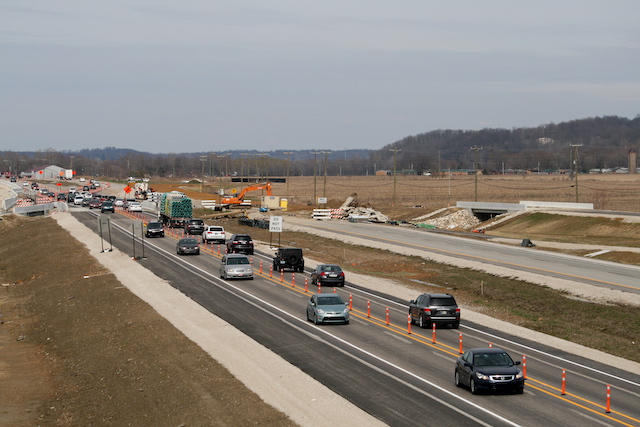
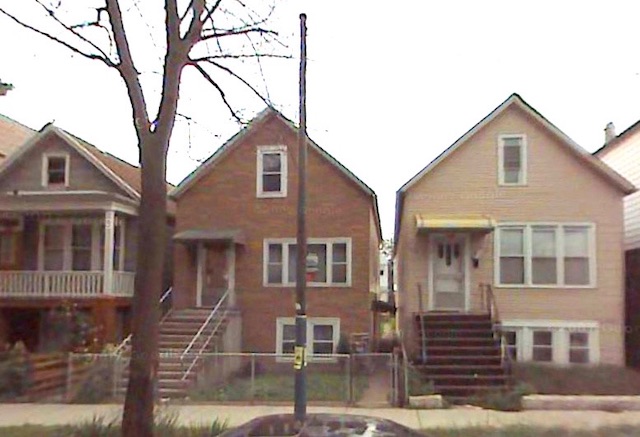
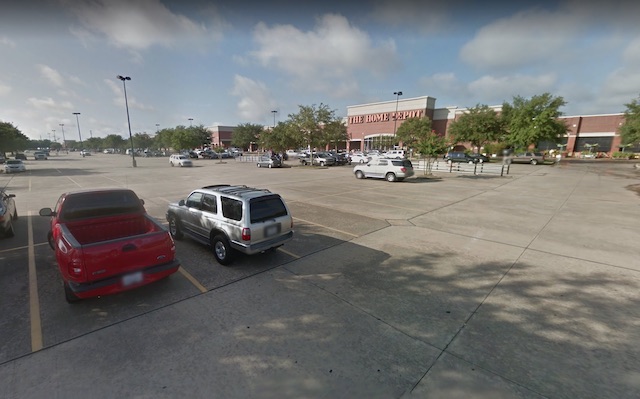
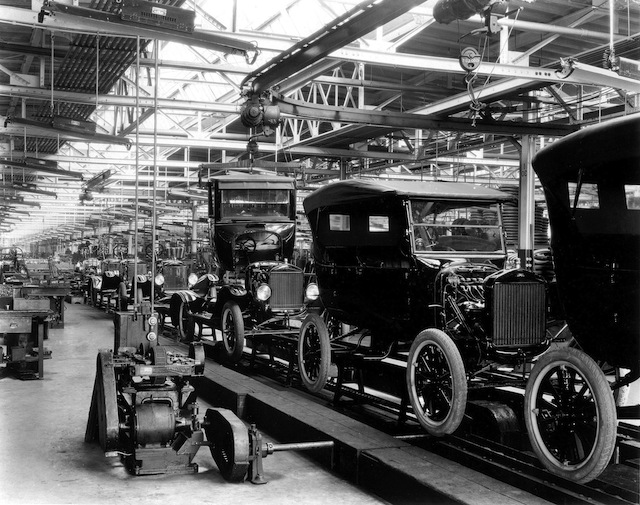
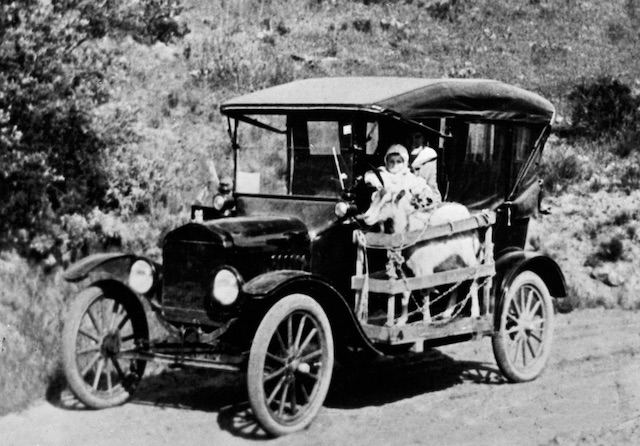
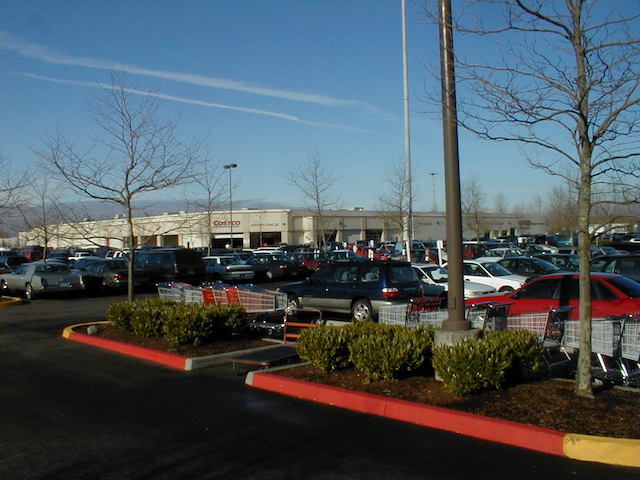







Don’t read the Atlantic. It’s nothing but liberal propaganda and talking points. They cavalierly twist words like “force” to support their redistributionist world view.
It’s like a fukin carjacking in reverse.
“GET IN THE FUCKING CAR, DRIVE NOWWWW”
”
Shill borrows Donald Shoup’s argument that minimum parking requirements forced developers to waste money on unnecessary parking. The reality is that developers build parking whether they are required to or not because they know that housing, retail, and commercial developments are almost impossible to sell or rent if there is no parking for residents, employees, and customers. Even if there were too much parking, it isn’t clear how that would force people to drive.
” ~anti-planner
The core issue with Shill is that even though he’s in the middle of nowhere, Iowa, he’s obsessed with NYC. He has no issue with throwing out the sloppy claim that some employer is forced to pay $50K for a parking spot. It’s sloppy for 2 reasons: a ) $50K is the _HIGH END_ of cost for building a parking ramp spot in a place like NYC. Nevermind that the spot will be good for 50 years. That’s sloppy.
And it’s sloppy because it’s NYC. He trys to play it off as some the Wal-Mart in Grand Rapids is spending $50K PER SPOT. Insanity!
The reality is that a place like Wal Mart is spending @$4M-$8M to buy land and build a new store. Keep in mind most of that cost is construction, not land. That store will have something like 850 to 1,000 parking spots. Even if they spent half of that cost on land for parking and paving the lot, when amortized over 20 years, they’re spending something like $100 – $200 PER SPOT PER YEAR.
Retails’ insanely competitive. Their margins are hair thin. They don’t have money to waste. If the cost of all those so-called extra, wasteful spots was actually high and wasteful, they’d be pushing back left and right to lower the requirements. They don’t because the parking is dirt cheap.
If you want to understand an argument better, take the same arguments and switch the domain. In the case of parking for retail stores, switch the domain from parking at retail stores to bathrooms at retail stores. You’ll see how ridiculous the zealots are.
Bathroom minimum’s are subsidizing American’s to pee more often than they need to!
Laws are compelling Americans to pee in bathrooms far away from away from their homes rather than in their own neighborhoods.
Etc, etc.
If you want to understand an argument better, take the same arguments and switch the domain. In the case of parking for retail stores, switch the domain from parking at retail stores to bathrooms at retail stores. You’ll see how ridiculous the zealots are.
Bathroom minimum’s are subsidizing American’s to pee more often than they need to!
Laws are compelling Americans to pee in bathrooms far away from away from their homes rather than in their own neighborhoods.
Etc, etc.
This is probably one of the more idiotic comments I have ever seen on this site. Even the Antiplanner would have to agree that humans are required by nature to use the restroom but are not required by nature to drive.